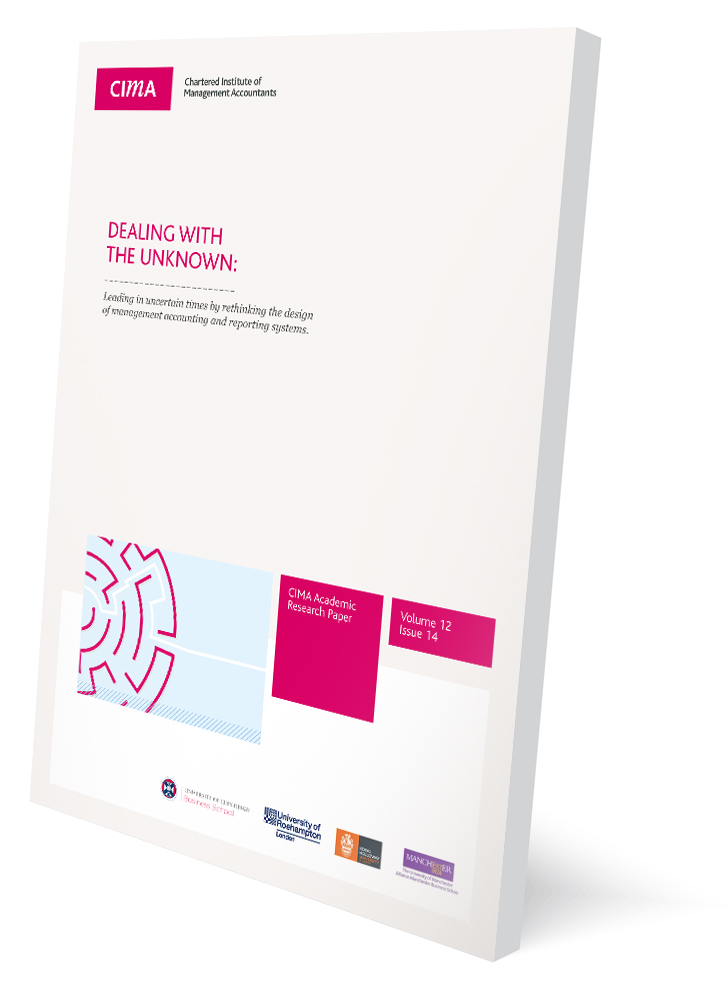By Peter Spence
Finance professionals can really drive value when they work with other functions. AICPA & CIMA’s Associate Technical Director offers some advice for maximising the opportunities of business partnering.
Accounting and finance professionals have an opportunity to step into leadership roles and unite their organisations toward a common goal.
By bringing together stakeholders across functions to raise doubts and engage in productive debate, finance business partners can help generate new knowledge and provide more value than ever before.
CIMA®’s work on Dealing with the Unknown offers a framework for how finance leaders can leverage four design principles to effectively partner with other functions and take on the role of mediator. These four principles include generating discussion and debate, engaging with a variety of viewpoints, embracing visuals and simplifying processes.
Generate discussion and debate across functions
Finance professionals love numbers and spreadsheets, but numbers don’t always hold all the answers. By focusing exclusively on what can be measured, we risk ignoring the unmeasurable but vital factors that could create dangerous blind spots for our organisations.
Leaders can incorporate the first design principle by providing opportunities for regular interaction among functions.
In a CIMA® finance business partnering research report, Toyota UK lays out their approach to effective business partnering. The organisation creates opportunities for inter-departmental discussion by embedding business partners in each division to break down silos and having teams work in an open plan office to facilitate regular interaction.
These strategies have been effective because they encourage employees to simply walk over and ask questions of other functions and allow them to organically form relationships and build trust with one another.
These interactions help finance understand all aspects of the business to gain context and empathy for other functions, while simultaneously humanising finance professionals.
By tearing down silos and moving away from a hierarchical system where business partners are viewed as policemen who control the budget, organisations can align everyone to the same goals.
Encourage and embrace different viewpoints
The second design principle is related to the first in that they both aim to surface new knowledge and enrich conversations.
For any investment proposal, finance should take the lead on probing the business case and mediating productive debate among stakeholders with a variety of viewpoints.
At Toyota UK, they make a habit of repeating ‘why’ at least five times to ensure every major business decision and investment creates value. This process of raising doubts and questioning assumptions also helps to minimise unnecessary risk, develop solutions to problems and generate buy-in from key stakeholders.
Another organisation profiled in the CIMA® report under the pseudonym Mancunia sought out different viewpoints by adapting their questions to each stakeholder or function.
For example, when the finance director was working with the marketing director, they didn’t simply show them the raw numbers. Instead, they chose two areas that mattered most to the marketing director (product launches and portfolio life-cycle planning) and crafted probing questions around those. This approach helped the marketing director truly understand what drives costs and profits while allowing the finance director to gather valuable insights in return.

Use visuals to demystify the numbers
The third design principle is to use visuals to facilitate better understanding. Visuals have the potential to demystify finance and offer entry points for discussion among people with varied backgrounds.
Presenting spreadsheets or dull PowerPoint slides are not always effective ways to engage other functions and encourage productive debate.
Finance business partners should aim to speak a common language so everyone can understand one another and effectively engage with uncertainties.
For example, the finance team at Mancunia uses simple, visual charts to help the marketing team understand the relationship between selling price and margin percentage.
Because finance doesn’t always know best, visuals are powerful tools that allow other functions to question the numbers and generate collaborative, novel solutions to problems.
Simplify coordinating processes and systems
In siloed organisations, each function has their own way of doing things, which results in a fractured system where knowledge often falls through the cracks.
The fourth design principle suggests creating unified processes that allow functions to effectively coordinate with one another.
For example, at Toyota UK, the entire organisation uses the same simplified system to see investment proposals through to delivery. Having a clear, unified process avoids duplication of reports and burdening of other functions with numbers.
All four design principles are deeply entangled and meant to be implemented simultaneously. By taking the initiative to break down silos and unite functions, finance professionals can accept the mantle of leadership and orchestrate immense value for their organisation.
Peter Spence is the Associate Technical Director – Management Accounting of the AICPA & CIMA







